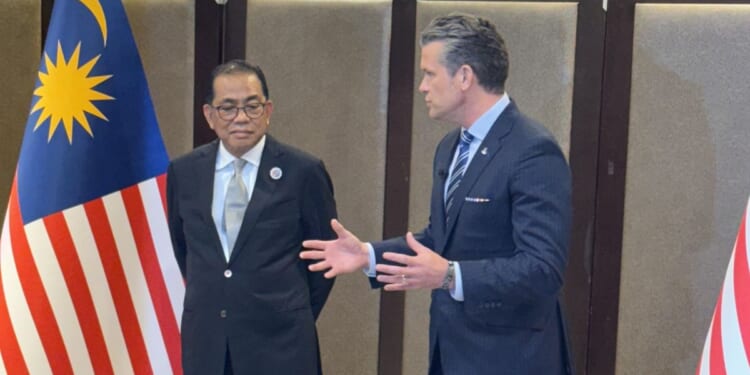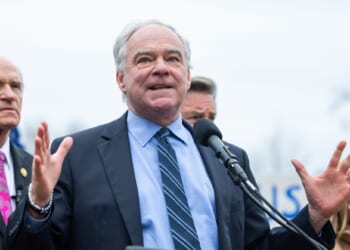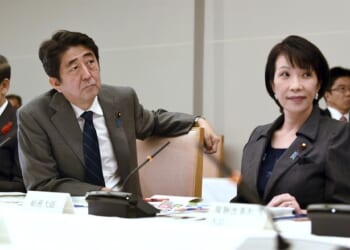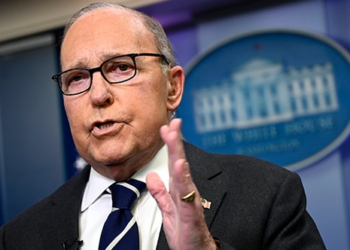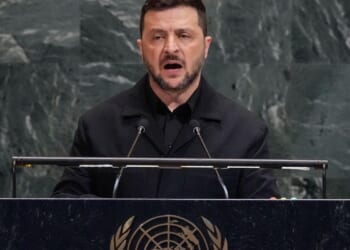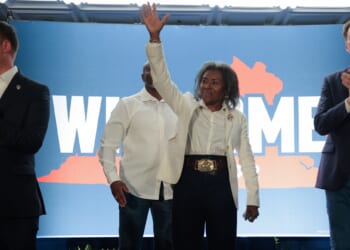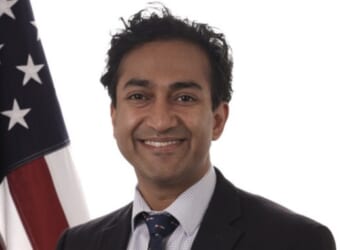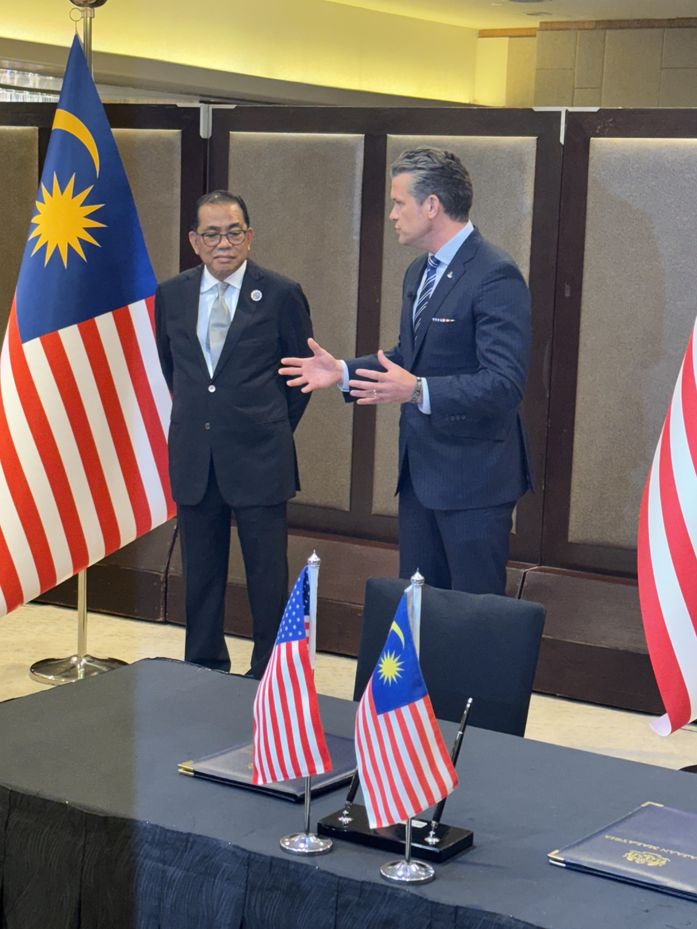
KUALA LUMPUR, Malaysia — A forthcoming national defense strategy will keep the Pentagon’s main focus on threats from Communist China in addition to placing a new emphasis on homeland and Western Hemisphere defenses, Defense Secretary Pete Hegseth said.
Addressing reports that a draft of the new strategy will call for a shift away from China, Mr. Hegseth called the idea a “wrong characterization.”
Noting he did not want to “get ahead” of the unreleased final strategy, the defense chief sought to dispel the notion that the strategy will lead to a major defense policy change.
“But just because you recognize the need to focus on our own hemisphere does not mean we’re distracted from the pacing threat and the reality of what deterring China really means,” Mr. Hegseth said Wednesday in an interview.
The defense chief spoke to reporters en route to Malaysia from Japan in his cabin aboard an Air Force Boeing 747 E-4B nuclear command aircraft. He was traveling to a meeting of defense ministers of the Association of Southeast Asian Nations.
On the strategy, he said: “There’s been some mischaracterization of what that means — getting a hold of our border, getting a hold of our hemisphere means a lot of assets that maybe have been far flung around the world could be a little closer to home.”
SEE ALSO: Pentagon communications policy could cut off Congress from military, GOP lawmakers say
“But it doesn’t change how our building calibrates our pacing threat and the seriousness with which we take it,” Mr. Hegseth said.
“So I look forward to rolling it out so that some of the mischaracterizations are addressed,” he said.
Critics say the new strategy reflects the views of Vice President J.D. Vance, who has voiced support for fewer foreign engagements by the United States, and Elbridge Colby, the Pentagon’s most senior policy official who views China as a threat driven more by nationalism than communist ideology.
In the Indo-Pacific region
In a wide-ranging interview, Mr. Hegseth also said the threat of conflict with China over Taiwan remains real. This week’s meeting between President Trump and Chinese President Xi Jinping and a likely meeting here between the defense secretary and his Chinese counterpart could help reduce risks.
The defense secretary provided new details on the policy behind ongoing U.S. military strikes against alleged drug traffickers and their networks in the Caribbean and Latin America.
On removing politically correct policies from the Pentagon and military, Mr. Hegseth declared substantial progress in turning the defense establishment away from radical gender and racial policies toward a renewed culture of warrior ethos among 2.6 million military personnel.
Mounting threats from China are a main focus of Mr. Hegseth’s four-nation swing through the Indo-Pacific region.
Earlier this week, he met Japan’s new defense minister, Shinjiro Koizumi, and warned Japan of the need to rapidly build up its forces to counter growing military dangers from the Chinese military.
In Malaysia, Mr. Hegseth will hold meetings with defense chiefs from several regional states, and a likely meeting with Chinese Defense Minister Dong Jun.
From Malaysia, he goes to Vietnam for talks on improving military relations with that communist nation, concerned over threats from China. His last stop will be in South Korea for defense consultations with South Korean and U.S. defense and military leaders.
On China, Mr. Hegseth said the U.S. has to remain vigilant and prepared for a future confrontation with China by increasing training and working together with allied militaries in the region. The goal is to “ensure that China understands that we have a credible deterrent,” he said.
Mr. Trump’s effort to smooth relations with Mr. Xi, and the meeting of the two leaders in South Korea, also is expected to develop what Mr. Hegseth said is a good, strong and respectful relationship with Beijing.
“The president wants a good relationship with Xi. I would like a good relationship with my counterpart. There is no intent from our side to coerce or confront, insult. That’s not part of our calculation. We are just a strong nation … that realistically looks at the world, wants our allies to take it the same way. We are going to work with them to do that,” the Pentagon chief said.
Mr. Hegseth, commenting on his remarks in May that the threat of war with China was both real and imminent, said it would be “irresponsible” for the U.S. not to recognize the dangers behind China’s rapid buildup of military capabilities. “That’s just a fact,” he said.
Chinese military forces have been conducting large-scale military drills around Taiwan that have gradually escalated in scale and timing for the past three years. The military activities include naval and air forces conducting operations that the Indo-Pacific Command has called rehearsals for war.
Beijing saber-rattling was on display last month with a massive military parade showing off an array of new weapons. They included new nuclear missiles, advanced drones, warplanes and hypersonic missiles.
Chinese cyber operations also are increasing, with detected penetrations of critical infrastructure in the United States raising alarms over concerns for future disruptions.
Internally, Chinese state media and propaganda outlets have suggested a future conflict with the United States is likely, according to U.S. officials who monitor internal developments.
Closer to home
On recent missile strikes on alleged drug smugglers, the defense secretary defended the attacks by U.S. forces as legitimate defense.
The policy of cracking down on drug shipments stems from the hundreds of thousands of overdose deaths among Americans over the past several years due to deadly fentanyl.
Transnational drug cartels and narco-terrorists are delivering the drugs and pose a direct threat to the American people, Mr. Hegseth said.
“So the rationale [for current military strikes] is quite simple: It’s self-defense of the American people,” Mr. Hegseth said. “We have been poisoned. Our kids have been poisoned. Our communities have been poisoned, and we’ve allowed it to happen because, for some reason, we weren’t willing to look holistically or seriously at the problem.”
Mr. Hegseth ordered the aircraft carrier USS Gerald R. Ford, the Navy’s newest carrier, to waters in the region as part of a major military buildup there. The carrier strike group will also add to the three guided missile warships in the region.
Thousands of Marines and a number of F-35 fighters also are deployed in the Southern Command operations area.
The military has blasted with missiles multiple vessels allegedly carrying illicit drugs toward the U.S. since September, bringing the total number of deaths to 61 as of Wednesday.
The new tougher approach is expected to alter how the drug networks operate, Mr. Hegseth said.
“But for now, this is a clear signal, and it’s not going to stop,” he said of the military strikes.
The operations are “not extrajudicial,” as some critics assert, Mr. Hegseth said.
“We’ve got a lot of lawyers and a lot of process that’s looking at it with the who and the why, and we’re working with Congress to make sure they have that information,” he said.
The targeting is very deliberate, and the identity of the traffickers who are struck is well known, he said.
“I’m very proud of the strikes that we’re taking, and we hope it changes the dynamic and atmosphere, and then it saves lives. That’s the point. Saves Lives for Americans.”
The president regards the fentanyl crisis as personal and has met families who lost relatives to the drug, Mr. Hegseth said.
Illicit drugs flooded across the border in recent years and through maritime routes and a decision was made by the president to take steps to stop the flow, he said.
Mr. Trump “kind of looked at it like a lot of other problems, and said, ‘Why are we accepting this status quo? Why are we allowing foreign countries who are providing precursors, which is why you see the 20% tariff on fentanyl from China,” he said.
Locking down the border was the first step in curbing the drug flow from South America and next was the designation of drug traffickers as foreign terrorists, which categorized the groups as similar to al Qaeda and the Islamic State.
“Do we negotiate with al Qaeda and ISIS? Do we treat them like civilians when they’re delivering their precursors of death? No, we don’t,” he said.
The Trump administration signaled the groups had the option of halting the drug trade, and the U.S. is now serious about countering.
Several administrations have conducted drug raids at sea and confiscated illicit narcotics for years, but nothing really changed, he said.
Traffickers were able to change their techniques, tactics and procedures with little or no impact by counter-drug operations.
Now the administration has declared that narco-terrorists will not be allowed to operate with impunity.
“So not only do we believe, we know, on behalf of the self-defense of the American people, that we have the authorities to strike these narco-terrorists in international waters,” Mr. Hegseth said. “And nobody tracks, hunts, finds networks and terrorists better than the United States of America.”
The use of military forces against the traffickers has just begun, he said, with large amounts of intelligence that are watching drug transfer boats being loaded and unloaded, monitoring drug networks’ movements, identifying affiliated groups and people and what kind of drugs they are carrying, the defense secretary said.
Mr. Hegseth was asked if fentanyl and other extremely potent drugs should be labeled as weapons of mass destruction. He said it has not been done but is a possibility in the future.
On the administration’s drive to expunge diversity, equity and inclusion policies, Mr. Hegseth said there has been a rapid decline in radical gender and racial policies at the Pentagon and in the military.
“I actually am impressed and grateful for the speed with which the services have driven that guidance,” he said. “I think it’s because it’s long overdue, and 95% of the folks in our formations want to be doing it.”
Part of the reason for his speech to several hundred generals and admirals was to “make sure that message is heard from the four-star to the private.”
Military and defense leaders and subordinates are no longer touting diversity as a strength, he said, but rather a shared military purpose.
Asked about pockets of resistance to the new policies, Mr. Hegseth said the process is a challenge.
“We’re nine months into this. Driving institutional change in a system as big as the Pentagon takes time, but it’s also why the leadership changes are so important. I feel good about it. It’s not perfect, it’s not done, but it’s important to make sure we’re ready.”
Retired Rear Adm. Will Rodriguez, writing in RealClearDefense, recently identified four DEI-focused organizations still operating within the military despite directions from the administration since January to halt such programs.
They include the All-Inclusive Hispanic/Latino Leader Resource Group for the U.S. Maritime Services, the National Naval Officers Association, the Sea Services Leadership Association and the Hispanic Veterans Leadership Alliance.

